I want to drive a WS2801 LED strip from a Raspberry Pi GPIO.
I have connected the MOSI and CLK pins directly to drive the LED but it is not working as the WS2801 datasheet says that a high level is \$0.8 \times V_{dd} = 0.8 \times 5V = 4V \$ (I am guessing).
I know that there are assembled modules available on internet (such as this: 4-channel I2C-safe Bi-directional Logic Level Converter) but before buying any of these I will like to be sure that this will be the right solution to get it working so I want to purchase "simple level shifter" on any local store.
What I am looking is the simplest level shifter that shifts the voltage from 3.3V to 5V (uni-directional). By "simplest" I mean that it has the least number of components (resistors, capacitors, etc.) as possible, maybe a single IC in a DIP form so I can use it in a breadboard.

